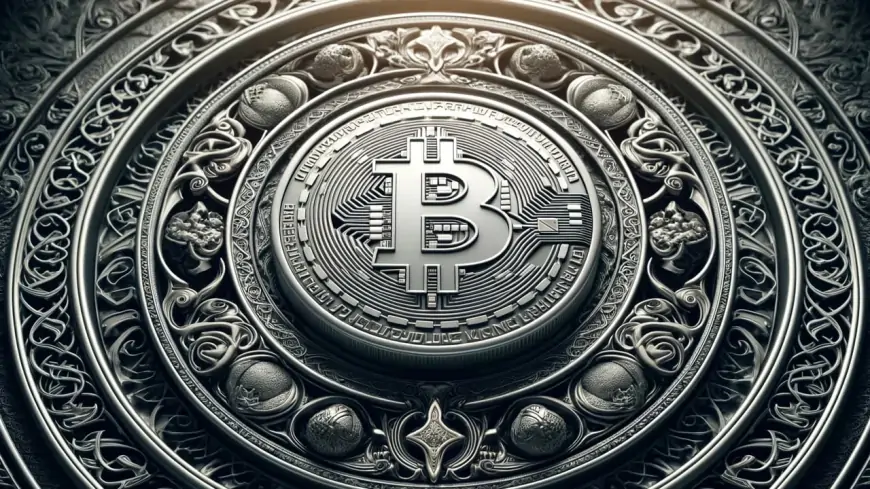What is Bitcoin runes? An ultimate guide in 2024
Bitcoin Runes is a platform exploring the intersection of Bitcoin and Norse mythology, offering unique insights and perspectives. Discover more.

Understanding Bitcoin runes protocol?
Runes represents a token protocol facilitating the generation of UTXO-based fungible tokens on the Bitcoin blockchain. It builds upon the widely-used BRC-20 standard, addressing concerns about its complexity and non-UTXO structure. Devised by Casey Rodarmor in September 2023, Rodarmor, known for pioneering Ordinals theory, introduced non-fungible tokens (NFTs) on Bitcoin in December 2022.
What prompted the creation of runes?
Not everyone has welcomed the advent of Ordinals. Some criticize it for deviating from Bitcoin's original mission, while others blame it for blockchain bloat, slower transactions, and spikes in gas fees. Critics highlight the complexities involved in creating Ordinal inscriptions, posing new challenges for the Bitcoin blockchain.
When the idea of enhancing token protocols crossed the mind of Ordinals creator Rodarmor, he was apprehensive. He expressed uncertainty about the wisdom of introducing a new fungible token protocol for Bitcoin, considering that such tokens are often associated with scams and memes. However, acknowledging their enduring presence, akin to casinos, he saw the potential for significant transaction fee revenue, developer engagement, and user adoption if a robust fungible token protocol could be established for Bitcoin.
On September 25, 2023, Rodarmor unveiled the Runes token protocol to the public. Engineered to be easily implementable, seamlessly integrated into the Bitcoin blockchain, and with minimal on-chain impact, the Runes protocol aims to address these concerns.
Why runes deserve your attention?
To grasp the significance of Runes, it's essential to delve into Bitcoin's history. When Satoshi Nakamoto released the Bitcoin white paper in 2008, it envisioned a decentralized peer-to-peer (P2P) payment system, free from centralized control.
Many in the Bitcoin community still advocate for adhering to this original vision, emphasizing decentralized P2P transactions. In December 2022, the introduction of Ordinals theory expanded Bitcoin's capabilities by enabling the creation of NFTs on its blockchain.
Ordinals NFTs gained immense popularity, with weekly sales surpassing those on Ethereum (ETH) and Solana (SOL), two prominent NFT platforms. Moreover, BRC-20 tokens, similar to Ethereum's ERC-20 tokens, emerged on the Bitcoin blockchain.
Beyond fostering a new industry atop Bitcoin, Ordinals demonstrated its potential to bolster Bitcoin's security by boosting miner revenue. Bitcoin's design includes halving block rewards every four years, with the last halving expected in 2140, after which no new Bitcoin will be rewarded to miners. Consequently, miners will rely solely on transaction fees for revenue.
Runes: Potential for investment opportunities
Runes, the upgraded fungible token protocol tailored for Bitcoin, is poised to catalyze an ecosystem of Bitcoin-native tokens.
One foreseeable application of the Runes token protocol is the creation of Bitcoin-based meme coins. Additionally, we may witness the emergence of wrapped tokens representing cryptocurrencies from other blockchains on Bitcoin.
As advancements unfold in the Bitcoin Layer 2 (L2) and Bitcoin DeFi sectors, the possibility arises for the development of bitcoin-native tokens powering decentralized applications.
Franklin Templeton Digital Assets notes, "Presently, the market for fungible tokens on Bitcoin remains relatively small compared to Ethereum (ETH) and Solana (SOL). However, with the introduction of a more efficient token standard like Runes, Bitcoin stands to narrow the gap in its fungible market capitalization compared to other blockchains."
What is UTXO?
Let's take a quick look at the UTXO (Unspent Transaction Output) model, which Bitcoin employs to monitor user balances.
Unlike the account models utilized by Ethereum and many other blockchain networks, the UTXO model presents a distinct approach.
The account model resembles a traditional bank account, where the system monitors the balance, recording both deposits and withdrawals.
Conversely, the UTXO model operates on a slightly more intricate premise. It monitors the unspent portion of a Bitcoin transaction, essentially tracking the remaining amount after a transaction is initiated.
Consider this scenario:
Alice initially holds 5 BTC. She decides to send 3 BTC to Bob.
After the transaction:
- Alice has 2 BTC remaining.
- Bob now possesses a UTXO worth 3 BTC.
Subsequently, Bob receives a separate UTXO worth 5 BTC from Chad.
Now, Bob holds:
- A UTXO worth 3 BTC from Alice.
- A UTXO worth 5 BTC from Chad.
In total, Bob owns 2 UTXOs, enabling him to spend a combined total of 8 BTC.












































